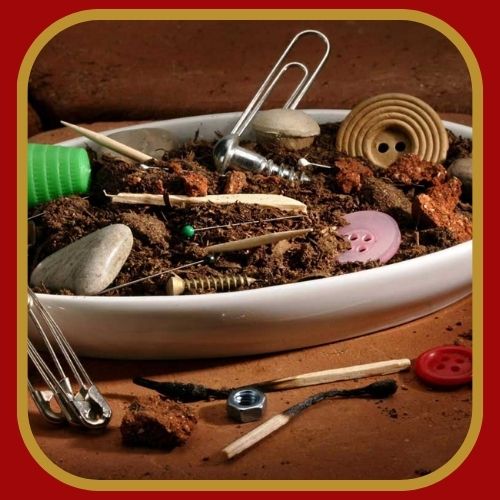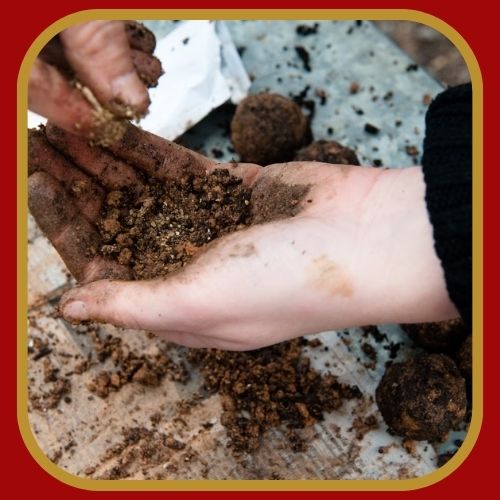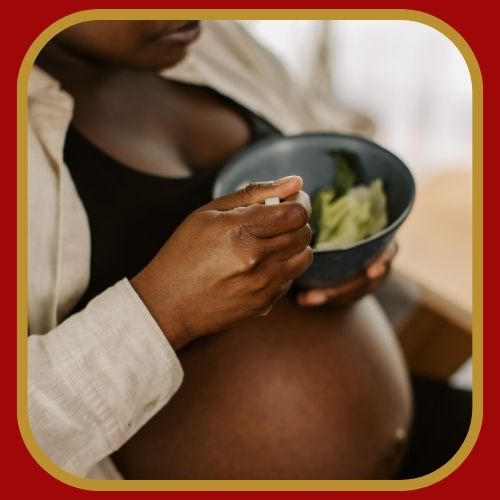Consuming corn starch is not a habit specific to Black people; rather, it’s common among individuals from various backgrounds.
The practice of eating corn starch is associated with a condition called pica, which is characterized by an urge to eat non-food items that have little or no nutritional value.
The items may include ice, chalk, clay, paper, charcoal, paint chips, soap, or corn starch, among others. Pica can affect people of all races and ethnicities.
In this article, we will learn how pica can affect anyone, especially children and pregnant women while debunking common stereotypes associated with pica and black people.
Also Read: Why do Black People Wash Chicken? All you Need to Know!
What is Pica?

In simple terms, pica is the habit of craving non-food items. These non-food items, such as clay or dirt, corn starch, ice, and paper have no nutritional value.
Pica is derived from “Eurasian magpie”, a Latin word that describes a bird that eats unusual objects.
While pica is often harmless, eating certain non-food items like chemicals is dangerous for your health. The good news is that therapy and lifestyle and environmental changes can effectively treat pica.
What Causes Pica?

There are several reasons why people eat non-food items. Among the common reasons researchers are certain are the following:
1. Nutritional Deficiencies
Pica is often linked to iron or zinc deficiencies. When your body lacks essential nutrients, it craves non-food substances that seem to provide relief from the deficiency.
Phytate, certain dietary fibres, and calcium can inhibit iron and zinc absorption, causing iron and zinc deficiencies in those who consume low amounts of iron-rich and zinc-rich foods.
People who have low iron or calcium deficiencies often try to compensate for these by eating non-food items. Additionally, people in some cultures consume clay or soil to make up for dietary deficiencies in iron, calcium, or other vitamins and minerals.
2. Cultural practices
In some cultures, consuming non-food items like clay or chalk is a traditional practice. However, this is not specific to Black people or any particular race.
3. Psychological factors
Pica can be related to stress, anxiety, or other psychological factors, leading to the consumption of non-food items as a coping mechanism.
4. Pregnancy
Among the various causes of pica among women is pregnancy due to hormonal changes. Hormonal changes lead to unusual cravings. Pregnant women have an increased appetite and may crave non-food items.
In addition, pregnancy can lead to nutritional deficiencies that can trigger eating non-food items. Sickle cell anaemia is also a condition that has connections to pica.
5. Negative Conditions
Pica is more common in children living in low socioeconomic situations, such as poverty. In situations where children are hungry, they eat clay to minimize their hunger.
These habits, in the long run, cause their stomachs to bloat since the clay is unable to move freely in the digestive tract.
6. Stress, Anxiety, and Coping Mechanisms
In addition, one can engage in eating non-food items during stress. This habit helps people cope with their stress levels.
Also Read: Why do Black People Wear Bonnets: Cultural and Practical Reasons
Cultural Practices and Pica

People with pica behaviors for cultural reasons have control over their actions, unlike people with other causes.
Cornstarch has been around and used by the locals of North and South America as an ingredient for a long time. In the kitchen, cornstarch is primarily used as a thickener.
Cornstarch has certain health benefits, such as aiding digestion. It’s sometimes used to help with constipation.
However, corn flour is low in calories and fat. Since it’s gluten-free, it’s a popular choice for those with an intolerance to gluten or an allergy.
People from various ethnic groups eat cornstarch, although it’s publicly prevalent among African American women.
Eating raw cornstarch may irritate your throat. It can also block your digestive tract if consumed in large quantities. Consult with your doctor before choosing to consume raw cornstarch.
Pregnant women in Haiti have a tradition of eating a biscuit called a galette or a bonbon tè. This cookie is a concoction of salt, fat, and soil. The biscuit is typically seen during extreme food scarcity seasons and used as a type of famine food.
The photo below shows a woman sun-drying “mud cookies”.

In El Santuario de Chimayó, a Roman Catholic shrine in New Mexico, USA, people engage in the religious habit of eating clay. In South African cities, where it is a widespread practice among young women, this is a periodic cultural practice.
Also Read: Why Do Black People Smell? A Myth or Truth!
Pica and Pregnancy

Women who are expecting frequently crave non-food items. Among these are cornstarch, ice, and kaolin. These expecting mothers yearn for and consume cornstarch straight from the box.
This behavior can run in families. For example, the grandmother and mother both craved cornstarch and laundry starch while they were pregnant.
While pica is not limited to pregnant women, it’s more common in pregnant women compared to non-pregnant women. While the reason for pica emerging during pregnancy is unknown, it may be related to nutritional deficiencies, according to the Journal of the American Dietetic Association.
Research shows about 28% of pregnant women experience pica during and just after pregnancy. Often, pica cravings begin during the first trimester. The most common non-food items ingested during pregnancy are dirt, clay, and powdered laundry detergent.
Consuming non-food items can be harmful to both expectant mothers and their unborn children. For example, pica can hamper the absorption of nutrients in healthy food. Hence, it can cause a nutritional deficiency.
Debunking Stereotypes and Misconceptions

1. Misconception: Pica affects only women
Fact: Pica affects anyone;
Pica can affect anyone at any age, especially children and pregnant women of all ethnic groups.
1 in 3 people with eating disorders are male, according to the National Eating Disorders Association (NEDA). The NEDA also reports that 10 million American men will, at some point in their lives, suffer from an eating disorder.
Additionally, the abuse of laxatives is an eating disorder that is almost as prevalent in men as it is in women.
Men are, however, less likely than women to seek treatment for an eating disorder like pica.
2. Stereotype: Only black people eat cornstarch
Fact: Anyone can be addicted to cornstarch
Pica is not exclusive to black people. Pica can happen to anyone at any age but tends to happen to three specific groups of people:
- Young children, especially those under 6 years old.
- People who are pregnant.
- People with certain mental health conditions, especially autism spectrum disorder, intellectual disabilities, or schizophrenia.
3. Misconception: People with eating disorders are extremely thin
Fact: Many people with an eating disorder are not underweight.
It’s not possible to tell if someone has pica just by looking at them. Although there is the assumption that people with pica are skinny.
Also Read: Homophobia in the Black Community: The Ultimate Guide!
Your Turn…
It’s important to note that the consumption of corn starch or other non-food items is not unique to any racial or ethnic group. Pica can affect people from all backgrounds, and it’s essential to avoid making assumptions or perpetuating stereotypes.
Providing accurate information and understanding the complexity of human experiences is key to fostering respect and inclusivity
Read Related Articles:
